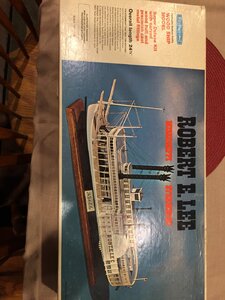Kurt Konrath
Kurt Konrath
The fun level picks up as you get lower in the bow planking!
 |
As a way to introduce our brass coins to the community, we will raffle off a free coin during the month of August. Follow link ABOVE for instructions for entering. |
 |
 |
The beloved Ships in Scale Magazine is back and charting a new course for 2026! Discover new skills, new techniques, and new inspirations in every issue. NOTE THAT OUR FIRST ISSUE WILL BE JAN/FEB 2026 |
 |
I hate it when it does that.Right then, been busy with the port side bulwark. Have completed the planking, just a couple of planks to add at the stern that Finish with a 90 degree turn,View attachment 179090View attachment 179091View attachment 179092 gonna be tricky to get right.
What’s it do, Smelly?Hello I have started the starboard planking.
And I received a new tool last Thursday.....View attachment 179945View attachment 179946
I told the Admiral I don’t know what I’d use it for but it would sure be nice to have. She said that $400 would buy me a ticket to see our daughter. I guess I’ll have to wait.Byrnes Model Machines - Thickness Sander
Byrnes Model Machines produces precision-engineered miniature Table Saws and Thickness Sanders for Ship Modelers, Dollhouse Makers and Model Railroad Builders; every machine has an accuracy measured in thousandths of an inch.www.byrnesmodelmachines.com
there ya go
Very cool. Someone at work just handed me this. She got it for free at a garage sale.This came in the mail from Ancre took 3 weeks to get here View attachment 180371

you cannot beat 'free' staff.Very cool. Someone at work just handed me this. She got it for free at a garage sale.

